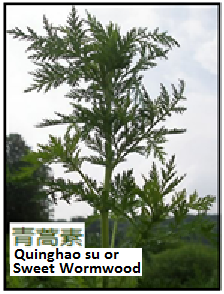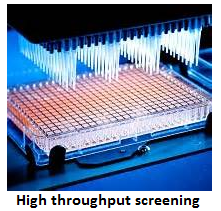A traditional Chinese remedy for malaria has been found to help drugs act more intensely against TB, says S.Ananthanarayanan.
A third of the world’s population harbours the tuberculosis bacterium, which causes nearing two million deaths each year. The disease is curable, but the deaths, mostly in developing countries, are mainly because of insufficient or incomplete treatment. Apart from the patient not being rid of the disease, less treatment gives rise to antibiotic resistance.
An important reason for the treatment remaining incomplete is that it needs to be taken regularly, over a period of six months or more. Patients in developing countries are frequently unable to stick with the medicine regimen and the bacterium is not destroyed, but revives, often in a form that may not respond to available antibiotics. In the context, the discovery by Huiqing Zheng, Christopher J. Colvin, Benjamin K. Johnson, Paul D. Kirchhoff, Michael Wilson, Katriana Jorgensen-Muga, Scott D. Larsen and Robert B. Abramovitch of the Michigan State University, the University of Michigan and Sweet Briar College, Virginia of a method to attack the TB bacterium effectively over a shorter period is of widespread importance. The team of researchers reports in the journal, Nature Chemical Biology, that artemisinin, the active component of an ancient Chinese herbal treatment for malaria, effectively interferes with the mechanism of the TB bacterium to evade the immune system and lurk in a dormant state, which is the reason that treatment needs to be maintained for a longer period.
The immune system in the body reacts to the presence of Mycobacterium tuberculosis (Mtb), which causes tuberculosis, by turning off the supply of oxygen and nutrients that the bacterium needs, and by regulating the level of acidity. The bacterium, in turn has evolved a mechanism of slowing down its metabolic activity and entering a state of dormancy so that it can survive the immune system attack. It has been found that the response is brought about by a set of genes called DosRST, for ‘Dormancy survival Regulator’, along with components ‘S’ and ‘T’. DosS and DosT sense the levels of nitrous oxide, carbon monoxide and oxygen, to promote a set of genes called the DosR regulon. The DosR regulon keeps Mtb quiescent and also imparts resistance to antibiotics.
There has hence been interest in finding ways to block dormancy, and one way would be to inhibit the working of Mtb’s machinery to detect low levels of oxygen. In the course of automated trials conducted on over 540,000 small molecules, to assess their effect on DosRST, it was found that five compounds, including artemisinin, were able to prevent DosRST from responding to environmental oxygen levels. “If Mtb cannot sense low oxygen, then it cannot become dormant and will die,” says microbiologist and TB expert Robert Abramovitch, who led the study.
Artemisinin
Artemisinin, known as quinghao su in Chinese, is a 2,000-year-old remedy for the falciparum, or cerebral, strain of malaria. Artemisinin occurs naturally in the plant Artemisia annua, sweet wormwood, from which it is now extracted. There is now also a means of producing the compound with the help of genetically engineered yeast.

Artemisinin, known as quinghao su in Chinese, is a 2,000-year-old remedy for the falciparum, or cerebral, strain of malaria. Artemisinin occurs naturally in the plant Artemisia annua, sweet wormwood, from which it is now extracted. There is now also a means of producing the compound with the help of genetically engineered yeast. While the drug has problems of being effective for a short time and of toxicity, it is still the best known rapid-acting drug against falciparum malaria and, in combination with other drugs, is now the standard protocol. Tu Youyou, the Chinese scientist who isolated the drug, shared the 2015 Nobel prize for medicine for her discovery.
Abramovitch and his team used an automated technique, called high throughput screening, where organisms can be treated with a range of chemical or other agents, in an array of thousands of small containers, called wells, in trays called microtitre plates. The results are then surveyed, in an operation known as an assay, and this can be automated, using robotic instrumentation. The method has been used effectively in drug discovery or to identify trace impurities or in quality control. The Abramovitch team made use of a fluorescent marker, or a chemical that glows when bathed in light of a suitable colour, that is activated by the presence of DosR in conditions of mild oxygen depletion. As DosR arises during oxygen depletion, the presence of DosR, which brings about dormancy of Mtb, would be advertised by fluorescence. If fluorescence were absent, however, this would indicate that growth of DosR had been suppressed by the compound that had been added to that well of the microtitre plate.

The method of High Throughput Screening enabled automated testing for fluorescence and rapid trials with 540,288 different compounds. The target of the test was a significant dip in the fluorescence, which would indicate that DosR had been suppressed. Artemisinin is believed to be effective against malaria because it affects an iron containing molecule, called heme, in cells. As the oxygen sensors, DosS/T also contain iron, the Artemisinin group was among the compounds tried out. And it is this group, along with five other compounds, that was found to have the strongest inhibiting action on DosR. The DosR regulon is composed of some fifty basic genes and another hundred, or so, are also expressed by variations of DosR. Analysis showed that artemisinin was able to inhibit the well characterised genes and also a large part of the others.

Administering Artemisinin based therapy could thus shut down the signal that tells the Mtb bacterium that it is time to sleep and disappear. The bacteria would then stay awake and be starved of oxygen and nutrients and in position for antibiotics to make short work of them. Apart from being empowered, the course of treatment would also be brief and capable of being more efficiently administered.
An important part of the arsenal against malaria, which affects much of Africa and South East Asia, would thus join the forward line in the offensive against tuberculosis, a scourge in the poorest parts of the world.
------------------------------------------------------------------------------------------